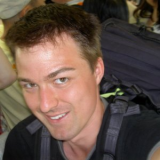It's not easy to stay on top of all the latest developments in the CPU world but luckily you hardly have to any more. All new computers are fast enough for most users, unless you absolutely want to play the latest games. But for the ones that want to know I've put together a summary of what has been going on during the last few years, what happens right now, and some rumors of the future.
There is still a lot happening on the CPU front, even if it might feel like the increase in performance is not as fast paced as it used to be a few years ago. The most notable change lately is that almost all new processors have two or more cores on each chip, but let's start from the beginning shall we?
NetBurst and K7 Everyone even remotely interested in computer hardware know that
NetBurst, the architecture used in the Pentium 4 processor, was far from elegant. Released in late 2000, it was built purely for high clock frequencies. The first NetBurst CPU had a 20 stage
pipeline, compared to the 10 stages in the Pentium III and the AMD
K7 Athlons. The long pipeline made it easier for Intel to push the clock frequency way up and soon enough the old Athlons were falling behind. AMD was simply unable to increase the clock frequencies any more with their current design and manufacturing processes.
K8When AMD released their K8 based
Opteron processors in the autumn 2003 the picture changed completely. The new CPUs completely left the NetBurst Pentium 4's in the dust. They had a completely different design, using a short 12 stage pipeline, compared to the 20 stages long pipeline used in the Northwood Pentium 4, and doing a lot more Instructions Per Clock (
IPC). The K8 architecture could perform three complex x86 instructions per clock, compared to one for the Pentium 4. It had three integer and three floating point
ALUs, compared to four integer and one floating point ALU for the contemporary NetBurst revision (More details
here).
The Opteron also added AMD's
x86-64 instruction set, making it possible to use more than 4GB ram without any inefficient work-around. The extension also included doubling the number of registers from 8 to 16, as well as doubling the size of the registers from 32 to 64 bit. Combined with a modern and efficient
HyperTransport bus and a low latency on-die memory controller there was just no way Intel could compete. They did their best, using their more advanced manufacturing process to add more cache to the CPU die and increased the pipeline length even further. The seventh revision of the NetBurst architecture called Prescott had 31 stages in the pipeline, but it just wasn't enough. Yet, all the Pentium 4 did was to get smoking hot.
Pentium-M and CoreLuckily for Intel, their engineers in Israel had been working on a new power efficient processor for use in laptops and came up with a real gem. Called a Pentium III on kryptonite, the Banias was built to keep power dissipation down. Released 2003 in laptops under the Centrino brand, enthusiasts quickly noticed they could overclock it to perform better than any desktop Pentium 4, and even better than the latest Athlons. Intel gave up on NetBurst and continued to develop the Pentium-M into what would be come the Core architecture.
The first Core based CPU, code named Yonah, was released in laptops as the Core Duo in January 2006. They performed way better than AMD's laptop offer, the Turion CPUs, who were both slower and consumed more power. Later in the spring Intel brought the Core architecture to the desktop with the Conroe processor. It was released under the name Core 2 Duo and was an instant success. The chips were about 33% faster than the Athlon 64's at the same clock frequency and they also included AMD's x86-64 extensions.
AMD tried to answer up to Intels offering, but now they were once again the having the inferior architecture. And just as before, they were unable to push their processors to the frequencies needed to compete with the Core 2 CPUs on the competitive desktop market. Debuting at 2.2 GHz in 2003, the fastest Athlon 64 FX was still stuck at 2.8 GHz in mid 2006 while the Core 2 Duo with twice the cache was already available at 2.933 GHz.
Fortunately it was still going well for AMD in the lucrative 4+ CPU server space. Intel's Core 2 Xeon server chips were still stuck with an old Front Side Bus (
FSB) and were unable to compete on four-sockets or more. AMD, now with the knife at their throat struggled to get Barcelona, the processor based on their new K10 architecture, ready for consumers.
Future - K10 and vPro, Bulldozer and NehalemThe long awaited Barcelona quad core processor will be released in mid September this year. AMD are still keeping a tight lid on all the details surrounding the chip, but some
leaked benchmarks from
The Inquirer sure look promising. The results show that the Barcelona could be pushed to over 30,000 3DMarks 06 and 11GB/s memory bandwidth compared to Intel's fastest "quad core" having 7.5 GB/s bandwidth. Architecturally they seem to be equals, but the question is if AMD will be able to compete for the top spot when they're always a step behind Intel in the manufacturing process.
To steal some thunder from AMD, Intel will release a new platform called vPro at the same time. First presented in 2002 under the name LaGrande, together with Microsofts controversial Palladium initiative, these extensions are now known as Trusted Execution Technology (
TXT). Intel have announced three new Core 2 Duo processors for use with the vPro platform. Intel is trying to push it as the ultimate virtualization technology, which it is in some ways, but it can also be used as a very powerful
DRM. Hopefully people will realize what this means and how "Big Content" can use it to lock you out from using your files as you want to. Hannibal describes his concerns well in his Ars Technica article about
vPro.
Next year Intel will start releasing systems using their new Common System Interface (
CSI), finally replacing the old FSB that's been a bottle neck for way too long. Initially it will be intended for multi socket servers, but the technology will trickle down to desktops and laptops later on.
For AMD the future seem to be about Bulldozer. It will be the first CPU with
SSE5 and will be build with AMD's new
modular Fusion architecture. The idea is to be able to mix several types of cores on the same die, including on-die Graphics Processing Units (
GPU). To be released in 2009, they will be up against Intel's next chip architecture called Nehalem.
Tip of the icebergI've intentionally left the
EPIC,
SPARC,
CELL and
POWER architectures out of this. They might be technically more interesting, but they're not x86. Maybe that's something I should get back to another day, if only to make fun of the
Itanic or to admire IBM's
POWER6 beast. IBM are producing the CPUs for all three new consoles, the Wii, the XBox360, and the PS 3, and there's a lot to say about all of them. I've also avoided talking about what's happening in the rapidly growing System On a Chip world. Mobile computing is exploding and there's many chip manufacturers who want a piece of the action.
I've listed several well written articles at the end of this post if you really want to dig in to details like vector processing instructions, memory bandwidth or the different manufacturing processes, they are all worth reading.
My favorite tech writer,
Jon "Hannibal" Stokes have recently released a book called "
Inside the Machine". I'm ashamed to say I haven't read the book yet, but it's definitely something I will do as soon as I can. Expect a review of it.
While reading forums and comments to articles about processor architectures I've come up with this modified version of
Goodwin's Law, we can call it Mogren's Law:
As an online discussion about processor architecture grows longer, the probability of a comparison involving Alpha or RISC approaches one.
The Alpha was a beautiful design though, too bad EV79 and later was canceled. Luckily the clever guys behind the Alpha design were quickly hired to work on
other things...
Into the Core: Intel's next-generation microarchitecture - Jon Stokes - April 05, 2006
Inside Barcelona: AMD's Next Generation - David Kanter - March 16, 2007
Intel Core 2 Duo - Franck Delattre and Marc Prieur - June 22, 2006
Core 2 Duo and the future of Intel - Rob Hallock - November 5, 2006
AMD K10 Micro-Architecture - Yury Malich - August 17, 2007
The Common System Interface: Intel's Future Interconnect - David Kanter - August 28, 2007
Intel's new vPro: two steps forward for x86... as well as for DRM and P2P? - Jon Stokes - August 27, 2007










